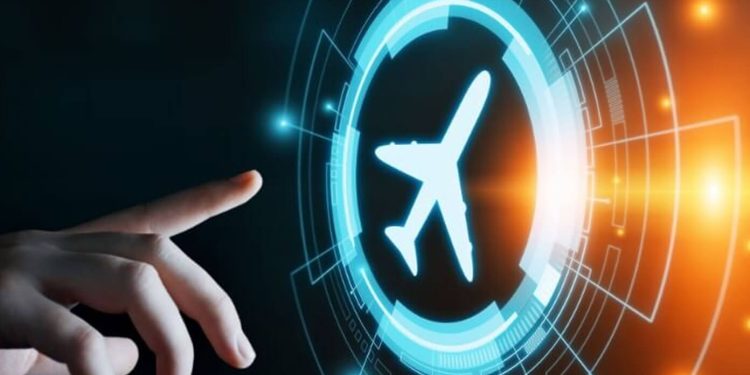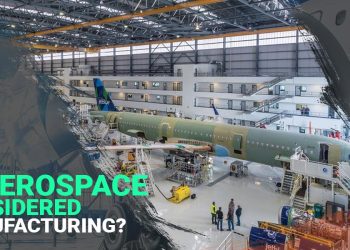IoT is an advanced technology that is based on data sharing and monitoring technology. It uses a network of intelligent connected devices with sensors that transmit data to systems where it can be monitored. Several industries – from manufacturing to agriculture are embracing this technology for the benefits it offers, but the aviation industry, in particular, can gain a lot from this revolutionary technology. In the post covid world, especially, where the safety of the passengers and demand for better services at a cost-effective price has been on an all-time high, IoT is paving the way for regulation and management of various kinds.
More personalized passenger experience
IoT allows airlines leaders to collect and leverage data to better understand the equipment and maintenance needed for an aircraft. For example, Airbus recently started Airbus Connected Experience, which aims to provide a new personalized passenger experience and opportunities for improving airlines’ operational efficiencies and revenues. By strategically placing IoT sensors from overhead bins to passenger seats and various other places, they gather real-time data to provide valuable insights to cabin crews. Some examples of data include the time taken for passengers to fasten their seat belts, food availability, bathroom shortage issues, etc.
Such data benefits both customers and airlines in the following ways:
- Customers can enjoy a personalized flying experience that caters to individual needs and preferences.
- Airlines can generate additional ancillary revenues through personalized retail, advertisement, and new services.
- By using predictive maintenance, airlines can improve their operational efficiency.
- Airlines can avoid waste and make crew services more efficient.
- Crews can enjoy a better working environment and more efficient tools.
- Sensors can be installed in different components of aircrafts.
Improved Efficiency
IoT devices can provide valuable data to increase efficiency in aviation. For example, Virgin Atlantic has integrated IoT devices on various aircraft and cargo equipment. The rich data collected by the IoT devices are used to detect aircraft equipment issues and take timely actions before the problem becomes too big and expensive. This predictive maintenance using IoT has reduced delays due to defects and maintenance by 20%.
Another airline that is benefitting from the connected devices is Emirates, which uses beacons to monitor equipment such as life jackets and toolboxes. By using the same technology in bag tags, it also tracks its cargo. When inspection and monitoring are automated, the efficiency of cabin staff is increased, and they can assist the customers better.
Predictive Maintenance
Using IoT, the existing conditions and on-air conditions of aircraft can be tracked. The data can be transmitted proactively to the concerned authorities and engineers to let them prioritize which maintenance function to perform first. IoT devices also allow them to perform diagnoses in real-time, which enables them to carry out preventive interventions and maintenance that extend the life of the aircraft and increase their safety.
Improved safety
By having IoT devices on different parts of the aircraft, airplane velocity, airplane angle, weather conditions, and other important criteria can be tracked and monitored by the concerned authorities, such as pilots and ground control, to allow efficient functioning and take proactive measures for the aircraft and the people traveling in it.
Using IoT, security mechanisms can also be implemented in airlines structures and offices, with the centralized administration of IoT devices from smartphones.
Smart temperature control
Temperature detection-based sensors strategically placed in the cabin can help maintain the temperature inside the cabin based upon the location and weather forecasting. By collecting real-time temperature for the plane, the sensors can enable the cabin crew to take proactive measures of reducing or increasing the cabin temperature.
Better air traffic management
Although the planes are already tracked of their real-time location, the tracking can be improved further by using IoT devices. With the help of IoT, their arrival and departure can be easily tracked for the availability and pauses on the runways.
Other aspects of the air traffic can be monitored, such as – speed, timing rescheduling to prevent collisions, ensure smooth movement, and maintain a smooth flow of aircraft in the line.
Less crowded terminals
Sensors can be deployed throughout the terminal to track all smartphones in the terminal and car park. By doing this, crowds, long queues, and bottlenecks can be prevented where they appear. This allows airports to provide better customer experience and make more profits through improved efficiencies and new revenue streams. Helsinki Airport in Finland is currently using this technology to offer a connected, smart, and unparalleled airport experience.
Effortless Luggage Management
Luggage collection and loading at the airports can be quite tedious and cumbersome for the passengers. Mishandling and the inability of the collection can create problems for the crew as well. IoT-enabled chips and barcodes can help in tracking the luggage of the passengers. They can quickly check the real-time location and the condition of their luggage from their smartphones. Sensors attached to bags will benefit passengers who have lost their baggage, allowing airlines to locate missing baggage quickly.
All these benefits will not just improve their experience but will also make the cabin crew’s job a lot easier.
Cost-Saving
Taking the most efficient routes optimizes fuel consumption, results in lower expenses for airlines, and maximizes profits. This application of IoT is currently being used by AirAsia, which allows it an estimated savings of between USD 30 to 50 million over five years.
Robot-managed tasks for better efficiency
Other IoT applications improving efficiency at airports may include autonomous vehicles and luggage carts. When paired with data sources, such as – gate numbers and schedules, a system can be created where robots perform vital tasks, such as cleaning debris, delivering baggage, and fuel planes to conduct surface operations more efficiently.
Wrap Up
The examples in this article sum up some ways the aviation industry can provide a smoother, more enjoyable flying experience by using IoT tech. But IoT tech is still in its growing stage, and it’s certain that future innovations in IoT will bring even more disruptions in the industry to make airlines experience even better, safer, and cost-effective for both customers and aviation companies.







